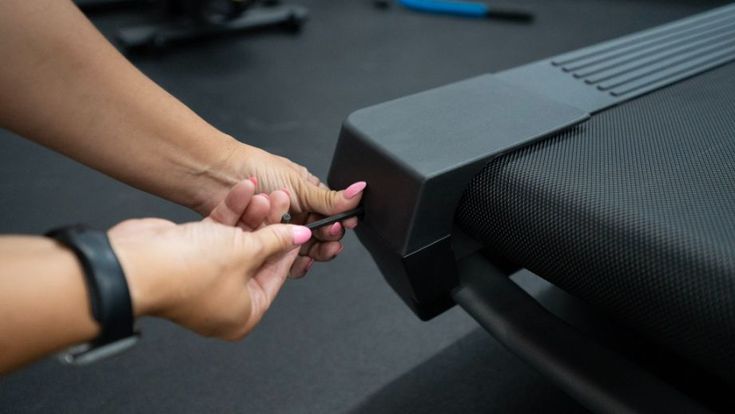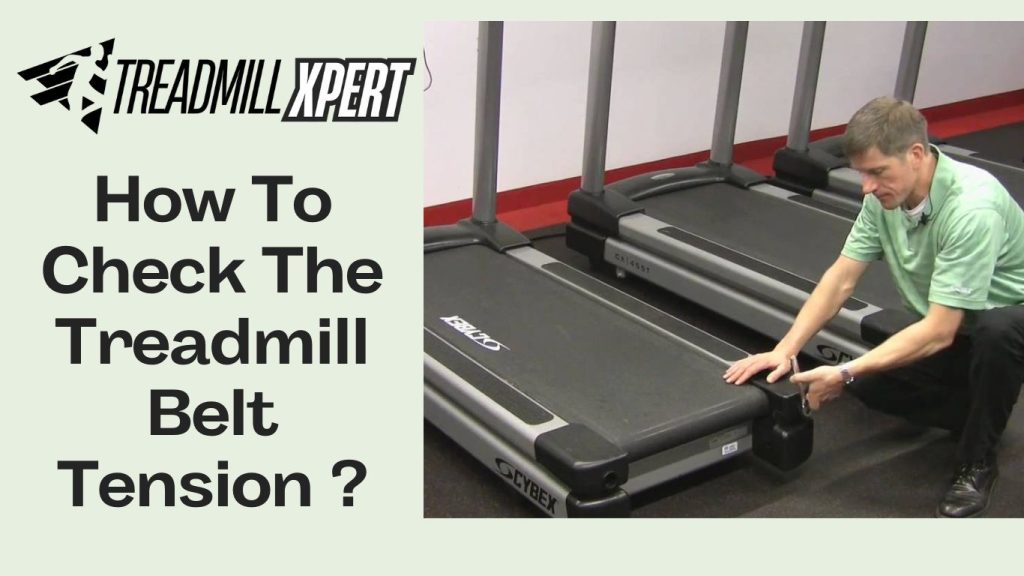How to Check the Treadmill Belt Tension? Easy Guide for Safe and Smooth Workouts
If you’re a treadmill user, whether for daily workouts or casual walking, ensuring the belt is properly tensioned is essential. A loose or tight treadmill belt can affect performance, cause safety issues, and wear out components prematurely. The good news? How to check the treadmill belt tension? It’s actually very easy—and you can do it yourself without any special tools or technical expertise.
In this guide, we’ll walk you through the exact steps, signs to look for, common adjustments, and maintenance tips for keeping your treadmill running smoothly.
Is It Easy to Check the Treadmill Belt Tension?
Yes, it’s easy to check the treadmill belt tension. You don’t need any mechanical background or expensive tools. Just your hands, eyes, and a few minutes of attention are enough. This process is the same for most treadmill brands—whether commercial or home use.
You can lift the belt by hand, feel for tension, and run the treadmills to check for slippage or hesitation. Most treadmills also have rear roller adjustment bolts that are easily accessible. Checking and adjusting the belt tension typically takes 5 to 10 minutes, even for beginners.
Why Treadmill Belt Tension Matters
Before learning how to check it, here’s why proper belt tension is important:
-
Ensures smooth belt motion
-
Prevents slippage or hesitation
-
Reduces strain on the motor and rollers
-
Enhances workout safety and comfort
-
Extends treadmill lifespan
Tools You’ll Need (If Any)
Most of the time, you won’t need anything extra. But in some cases, these may help:
-
Allen wrench (usually provided with the treadmill)
-
A ruler or measuring tape (optional)
-
User manual (for model-specific details)

Step-by-Step: How to Check the Treadmill Belt Tension?
Here’s the easiest way to check the belt tension manually:
Step 1: Power Off and Unplug the Treadmill
Always start by turning off and unplugging your treadmill. Safety is the priority.
Step 2: Feel Under the Belt
Lift each side of the treadmill belt in the center. There should be about 2 to 3 inches of lift with moderate force. If the belt lifts too high or folds, it’s too loose. If it barely moves, it may be too tight.
Step 3: Use Your Body Weight
Stand in the middle of the belt and press down firmly with your body weight. A properly tensioned belt will give slightly—like a trampoline—but should not sag more than 2-3 inches.
Step 4: Test While in Use
Plug the treadmill back in and set the speed to a slow walk (1-2 mph). Step on the belt:
-
If it slips, stutters, or stops, the tension is too loose.
-
If you hear grinding or rubbing sounds, the belt may be too tight.
Step 5: Inspect for Centering
The belt should stay centered while in motion. If it shifts to one side, it may need both tension and alignment adjustments.
How to Adjust Treadmill Belt Tension
If your check reveals that the belt is too loose or too tight, you can adjust it:
Step 1: Locate the Adjustment Bolts
Most treadmills have two rear roller bolts—one on each side of the deck. These are usually hex bolts that adjust tension and alignment.
Step 2: Make Small Adjustments
-
To tighten the belt: turn both bolts clockwise in 1/4 turn increments.
-
To loosen the belt: turn the bolts counterclockwise in 1/4 turn increments.
Avoid large adjustments. Make small changes and test after each one.
Step 3: Recheck the Tension
Repeat the steps to test the lift and walking behavior. Continue adjusting as needed until the belt is properly tensioned.
What About Newer Treadmills With Auto-Tension?
Some modern treadmills have automated belt tensioning systems, which may adjust tension electronically. In such cases:
-
Check your owner’s manual for the exact process.
-
You may find belt tension settings in the treadmill console.
-
If unsure, consult customer support or schedule professional maintenance.
Tips for Safe and Accurate Tension Checks
-
Always unplug before making manual checks or adjustments.
-
Don’t overtighten! Overly tight belts can strain the motor and reduce lifespan.
-
Make sure the belt remains centered while running.
-
After adjusting, walk and jog at slow and medium speeds to verify tension is correct.
-
Keep the belt clean to reduce friction and false slippage signals.
How Often Should You Check the Treadmill Belt Tension?
Monthly Checks
Make it a habit to check the belt tension once a month or every 50–100 hours of treadmill use.
After Belt Lubrication
If you’ve just lubricated the belt, recheck the tension. Sometimes lubrication can change how the belt sits or moves.
Post-Maintenance or Repair
Anytime the treadmill has been serviced, check the tension to ensure it’s still within the correct range.
Signs the Belt Needs Attention or Adjustment
-
Belt lifts more than 3 inches
-
Slipping when walking or running
-
Hesitation when stepping on the belt
-
Squeaking or grinding noises
-
Belt tracks to one side
-
Overheating motor (caused by excessive friction)
Belt Tension Maintenance Tips
Keeping your treadmill in top shape means consistent care:
1. Clean the Belt Regularly
Dust and debris can build up and affect belt tension and performance. Wipe down the edges and underside periodically.
2. Lubricate as Needed
Apply treadmill lubricant every 3-6 months to reduce friction. Be sure to follow your treadmill manual’s recommendations.
3. Watch for Belt Wear
A worn or stretched belt can’t hold tension properly. Replace it every 3 to 5 years or sooner if it shows damage.
4. Don’t Over-Tighten
Too much tension wears out the belt and stresses the motor. Always aim for moderate flexibility.
5. Check Deck and Motor
If problems persist even after adjusting tension, the motor, rollers, or deck may need attention.

Consider Professional Help If Needed
If you’ve adjusted the belt and issues still occur—such as slipping or noise—it might be time to call a technician. An annual treadmill inspection is also recommended, especially for high-use machines.
Final Thoughts
So, how to check the treadmill belt tension? It’s easy, fast, and can be done at home—even if you’re not mechanically inclined. By checking your belt tension regularly, making small adjustments, and following simple maintenance routines, you’ll improve your treadmill’s performance and lifespan.
Remember: safety, performance, and comfort all depend on the proper tension of your treadmill belt. With just a few minutes a month, you can prevent major issues and keep your machine running like new.
